
Warning, any of you golf aficionados may want to just stop reading right now.
I know… wtf am I doing writing about golf? I will preface it with this; this was a challenge brought on by two friends, to blog about the history of the Masters Tournament. I quote: “It will be fun” they said. “It’s history” they said, “Think of the Azaleas” they said…
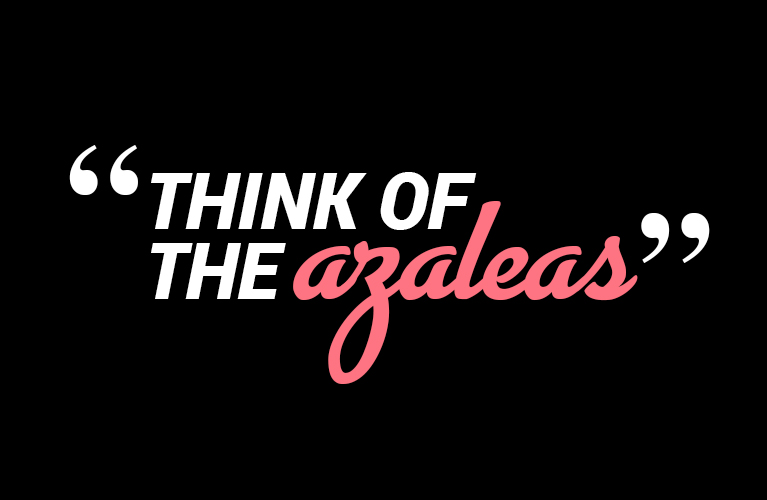
Challenge Accepted.
Where to begin…
My golf experience is zilch. I have never played golf, I have never driven around on a golf cart, been day drunk on a golf course or even posed for photographs on a green with a wedding party.
What I can tell you is… no one likes Shooter McGavin, a gopher is an extremely wise and cunning animal, and Tin Cup is a fucking terrible movie.
I DO however love history, traditions and for some reason, I am drawn to the South (“after all, tomorrow is another day!” – Scarlett O’Hara).
When I first started researching about the Masters, I was trying to find some of the humour in this ultra-exclusive location/game/tradition. Names of golfers like “Art Wall” and “Bubba” were cracking me up. Nevertheless, while name searching was fun, it was interesting to see the amount of male names listed, not to mention heavily Anglo-Saxon sounding.
I decided to tell a few people what my next blog post was about, and the reactions were extremely interesting. Several males I spoke to were really excited. In fact, their eyes lit up and they were more than happy to tell me all about “Amen Corner” “Magnolia Lane” and the thrill of a picturesque weekend of golf to watch. Others shrugged it off and told me they’d rather watch hockey. Interestingly enough, most of the females I spoke with had nothing nice to say about the Masters Tournament. Multiple women used these terms: “chauvinistic” “racist” “elitist” “boys club”.
I was confused, I questioned; “how can the sexes be so divided on this topic?”.
Knowing virtually NOTHING about this tournament, I started to dig, hungry for explanations.

The Augusta National Golf Club, where the Masters Tournament is held, was created by famous golfer, Bobby Jones. Bobby dreamed of a National Golf Club as destinguished and challenging as St. Andrews (Scotland). Together with Scottish Designer Alistair Mackenzie, they created what is now the iconic course and setting for the PGA’s most prestigious tournament.
Before the Masters and Bobby Jones, the location was home to Dennis Redmond. Many believed Redmond to have built an Indigo plantation, but this wasn’t the case. Redmond was an Irish immigrant, horticulturalist and junior editor for the publication: The Southern Cultivator. Redmond had NO interest in indigo and this common mistake can be found in multiple histories of the tournament. Fun fact, indigo was a colonial-era crop, which wouldn’t have survived the Revolution, anyway!
Redmond dedicated his life to plants. He utilized his land to build the Fruitland Nursery which specialized in fruit, ornamental trees, shrubs, vines, roses, evergreens, hedges and exotic plants.
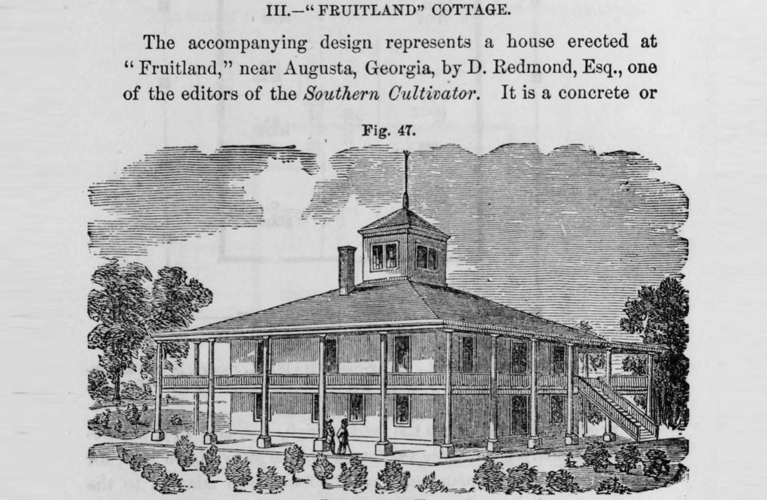
His house plans, ideas and design were featured in the publication: The house: A pocket manual of rural architecture: or, How to build country houses and out-buildings (1859). Throughout the publication, methods of construction, materials and location are mentioned; however the descriptions are vague enough that the reader wouldn’t know if his home was indeed, a plantation. This particular publication’s readership spanned beyond North America, with other countries abolishing slavery. Illustrating anything slave related would have severely impacted external readership and financial gain, leaving many of these magazines to purposely omit racist and concerning construction details.
Based on the building (which is now the Augusta Clubhouse), Redmond’s home featured a cupola, which has been described as the “observatory” in the 1859 publication. Traditionally, Southern plantation homes were adorned with cupolas, which were a way to exhaust heat (mentioned in Redmond’s description) however, they mainly served as a look-out where a Master could oversee his property…
Whether or not Redmond was a plantation owner is up in the air. Records do not show Redmond to have been involved with slave labour (yup, you can actually look up slave owners through online records), however his own publication, (which he became Editor of) The Southern Cultivator, was extremely prejudiced.
Moving on…
In 1858 Redmond sold his Nursery to a family of Belgian Horticulturalists, the Berckmans. The Family had moved from New Jersey to Georgia and had an established nursery called, Pearmont. The Berckmans are the fundamental reason for Georgia Peaches being as famous as they are. This family perfected variations of peach, creating the buzz we still hear today. With their success in taking over Fruitlands, the business flourished and even more variations of plants, flowers and produce were grown.
J. A. Berckmans was an especially talented and knowledgeable man. He taught and promoted forest conservation and reforestation. In various publications, he is emphasized as being a teacher, and a strong advocate in using proper Latin botanical names for plant species. This is kind of ironic when you think about the Augusta Course. Each hole is named after a type of flower found within the course, a tip of the hat to the Berckmans Family. However, if they wanted to be true to form and honour Berckmans, wouldn’t the hole names be in latin?
Maybe we shouldn’t think of the azaleas of hole 13. We should be thinking of the Rhododendron prunifolium of hole 13!
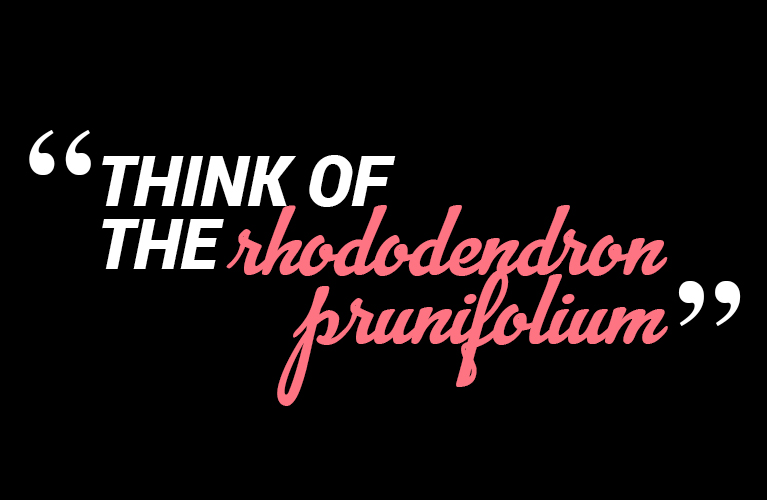
In all seriousness, the Berckmans took their Latin terminology very seriously. Their catalogues featured the Latin name first, followed by the common name directly after.

I could probably write an entire post just on the Berckmans Family, as they are the reason why the Augusta property is incredibly gorgeous. In fact, two of the Berckmans returned to their stomping grounds after the sale of Fruitlands, to assist in the landscaping of the course; with their knowledge of the land and of the vegetation, it was a perfect match.
Like most good things, Fruitlands came to an end.
Although the Berckmans brothers managed the nursery after their father’s death, it began to decline and was shut down around 1918. The Fruitlands name was sold to Mr. R. L. Wheeler, who had formerly worked there. His Fruitlands Nursery would continue to grow and prosper until the mid 1960s, on an adjacent property.
With the nursery abandoned from 1918 onward, a developer set his eyes on the property in 1925. He had visions of a grand hotel and golf course as an escape for wealthy Northerners. The developer, Mr. J. Perry Commodore Stoltz, was a famous Miami Hotelier, with a vision of bringing a 300 room hotel, complete with 15 floors to the Fruitlands property.
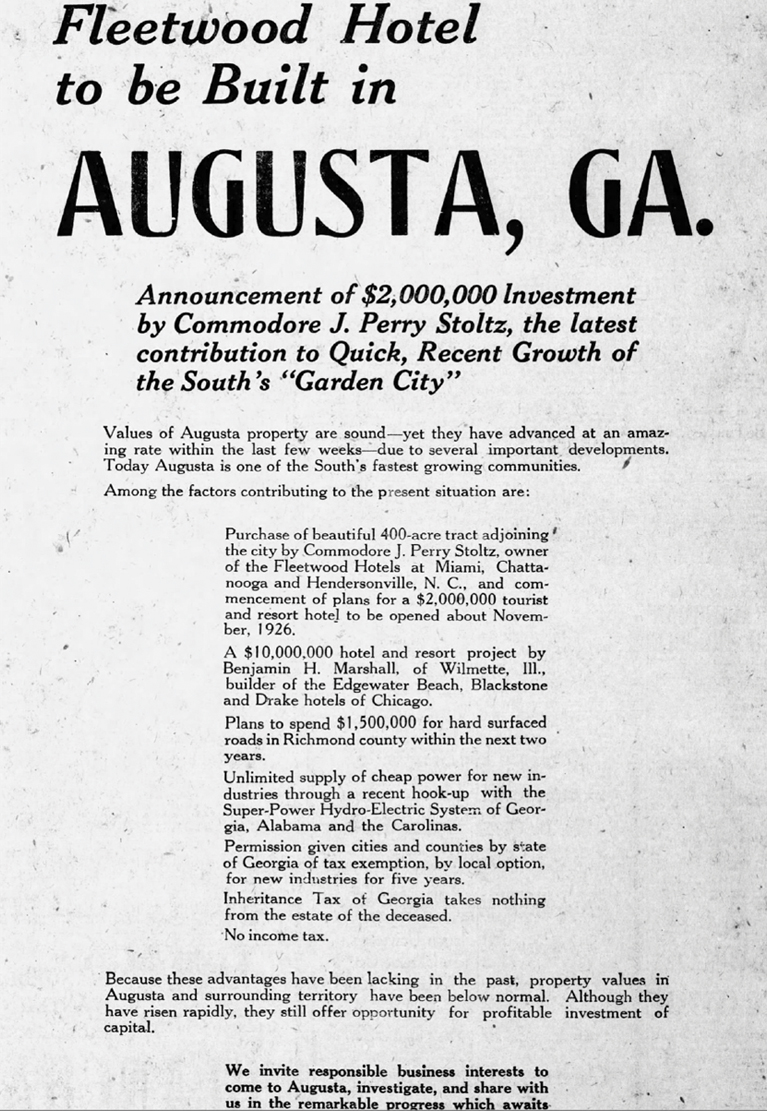
The beginning of a new foundation was poured, directly behind the original Fruitlands Home. The home was never part of his plan, and would be razed once the hotel was constructed. It is said that steel girders and bathtubs were delivered to the property, however they would never be installed because the hotel would never be constructed. The great Miami Hurricane of 1926 destroyed Commodore Stoltz’s Hotel empire. Not only was his Miami hotel leveled, he became financially unstable – which worsened with the eventual stock market crash.
Au revoir, Augusta Fleetwood Hotel.
Cue Bobby Jones and the current Augusta Course.
The course, the tournament and the traditions many people know and love today, are contradictory to that of Bobby Jones’ dream. Bobby dreamed of a course where he and his friends could golf and share the beauty of their hometown. In theory his course was posh, one of a kind and unheard of in North America. However, in announcing his new course, he stated:
The membership will be national in character. In addition, a number of Canadian and Englishmen will be invited to join. I expect to give liberally of my time to the club, especially during the formative period, and I hope that certain ideas of my own will be useful in creating what we wish to achieve, a golfer’s paradise.
Newspapers cite Bobby as being a modest man, identifying his locker location as being in the same area as fellow members, and not within its own area of the club. Today, many confines exist, such as the “Champions Locker Room” which is described via the Masters.com site as: “an exclusive room on the second floor of the Clubhouse with a veranda that overlooks Founders Circle and Magnolia Lane”. This instance of elitism is a shining example of everything Bobby Jones didn’t epitomize, yet has become established in association with the Augusta Course.
The “Champions Locker Room” overlooks Magnolia Lane, however, prior to the Masters Tournament, Magnolia Lane was in fact originally named “Magnolia Avenue”, (as an avenue is comprised of trees running along both sides of a road). The original reference to this tidbit can be found in the 1897 Fruitland Nursery Catalogue.
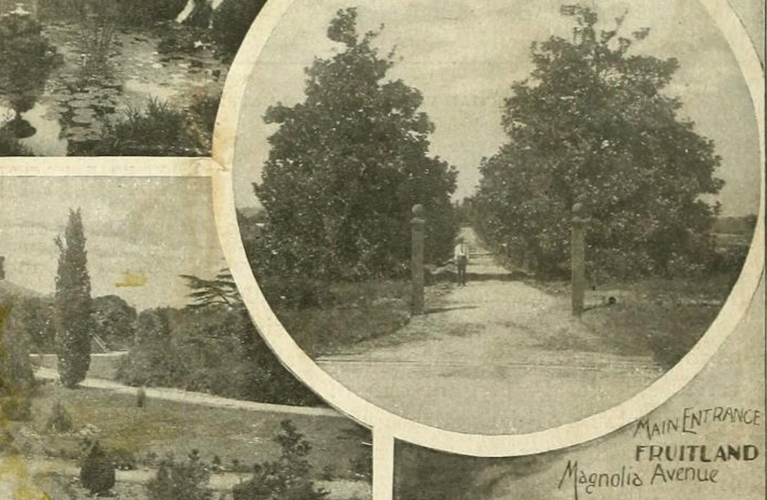
Where did the impropriety begin for Augusta?
For me the evidence begins with the introduction of Clifford Roberts, Chairman of the Augusta National Golf Club. His ideals and tactics were not akin with Bobby Jones from the beginning. For one, Bobby wanted to name his tournament “The Augusta Invitational National Tournament”, which stuck for a few years, but later Roberts convinced him to change it to “The Masters Tournament”. The contrasting titles say two very different things about the personalities behind them… Bobby was of civic nature, where Roberts came from an authoritarian persona. It was Roberts who also originated the coveted Green Jacket. A tradition associated with prestige and victory, presented to champions.
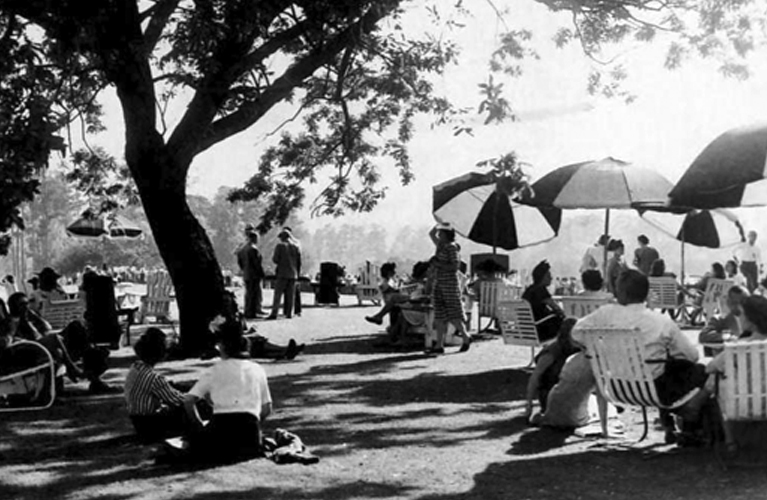
Over the years, reports of Robert’s impertinence surfaced. His publicly racist remarks, tyrannical behaviour and inability to relinquish power were ongoing. In fact, the first African American golfer (Lee Elder) was only admitted to play in the tournament in 1975 and the first African American member inducted into the club finally occurred in 1991. Additionally, women were finally introduced and allowed to become members of the club in 2012.
The fact that many of these men and women had to wait decades to play and become members (women are still waiting to play) is ridiculous. No wonder so many women I spoke with were up in arms about this tournament. But how did it come this far? How have these injustices been overlooked for so long, with little to no repercussions? While I may not have the answers, I do have my theories.
This post took me almost a month to write. I researched until my eyes hurt, and dug for information until I fell down the rabbit hole… or in this case, hole #13.
Through research, I have travelled to Southern Plantations, become familiar in ornamental trees and shrubs, and familiarized myself with Georgia history and and its people; specifically Bobby Jones. However, I continue to circle back to who I believe was the cause of the patronizing perspective the Masters conveys, Mr. Clifford Roberts.
Perhaps Roberts was jealous of Jones? After all, Bobby had the talent, the looks, his youth, money and the brains to create a course all on his own. Maybe Roberts wanted a taste of the glory and the legacy, without ever having to play the sport.
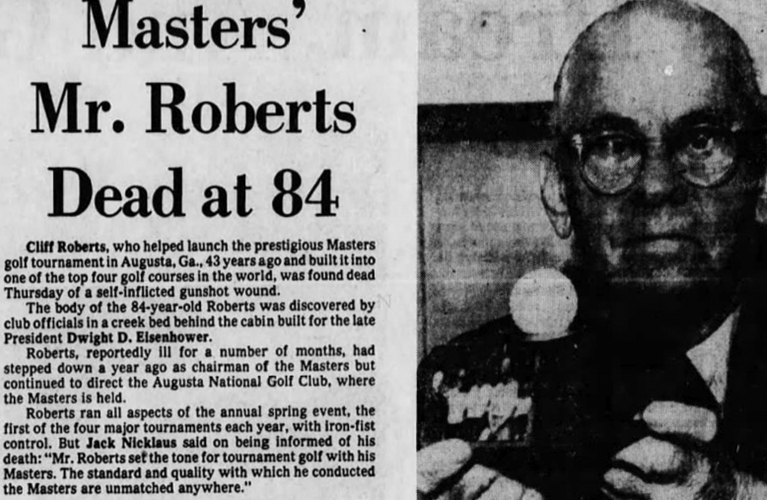
On September 29, 1977, Roberts was found dead from a self inflicted gunshot wound to the head on the banks of Ike’s Pond on the Par-3 course at Augusta National. Of all the places to die, he chose to end his existence between holes #8: Yellow Jasmine and #9: Carolina Cherry. In a way, his death reminds me of the classic fictional character, Jay Gatsby. Gatsby is found shot (murdered to be exact, by Tom Wilson) floating in his pool of his new money estate. Like Gatsby, Roberts is found face down, on a green – green being an extremely symbolic colour of wealth, envy and greed. And if we all remember the novel, Gatsby had a green light shining from the end of his dock, a clever representation of the American Dream. Possibly for Robert, the Augusta course became his own attainable and self-governing American Dream, extremely contradictory of the expression.
But here’s the twist, or my take if you will. Bobby Jones WAS living the American Dream. Bobby Jones was Jay Gatsby, a man with dreams, money and talent. Clifford Roberts was simply angry Tom Wilson, who eventually turned the gun on himself.
Whatever you take away from the information and viewpoints I’ve composed, know this; The Augusta National Golf Club and the Masters Tournament are more than just golf. They are a representation of many things, including the American Dream – especially to the immigrant families, Redmond and Berckmans. Augusta is an environment of continual change, rebirth, growth and victory. And perhaps, if we’re very lucky, The Masters Tournament will evolve and embrace the changes society desires, and desperately needs.
So now that you know, what you never wanted to know, do we have an ace?
If you liked this post, you might like others! Subscribe below by email and have stories straight to your inbox.
Leave a comment, below.
Discover more from Alex Inspired
Subscribe to get the latest posts sent to your email.



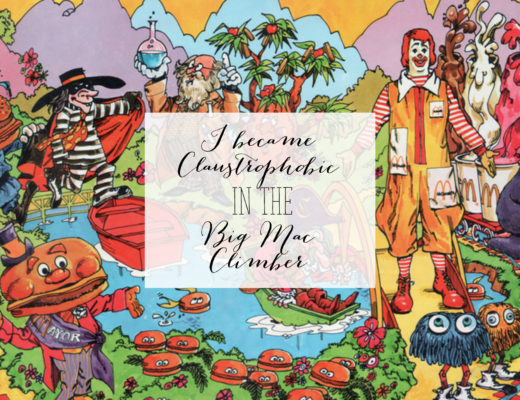
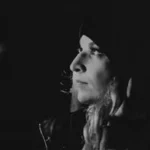
3 Comments
Hi, really enjoyed this piece on ANGC and its history.
Wow, takes my breath away! As an older white guy, new avid golfer and a
very-concerned-for-social-justice democracy-lover, I was really worried as
I read this piece that I would have to avoid the current Masters!
Well, it could have been a lot worse, and probably was, but the few items
of redemption makes it at least a little palatable!
But jeez, this is a very painful situation, what with the whole Georgia voter
suppression, the All-Star game being pulled, etc.!!!
I predict that there is going to be pressure to boycott the Masters sometime soon!
Anyway, I could go on but I am glad I read your piece!
Thanks, Mike
This was a good read. Thanks for doing all the research. It’s interesting to learn about the families that lived there prior to The Masters. I have always enjoyed The Masters. Between the level of play and the beauty of the course… it never disappoints. It’s racist past is a huge black-eye. Unfortunately, this type of change is organic, thus slow in nature. The pressure to change is greater than adhering to the past.
The “Masters” must change it name back to the original that Bobby Jones has titled it. The Masters is racist in its meaning and an under the breath joke referring to masters of slave plantations in the Confederacy. Sure the other meaning is the masters of golf that is just bullshit as no other majors are titled as so. I’m just happy Tiger ???? broke the mold in winning there but sad that he didn’t speak ????️ more about its symbolism as a racist environment. Well at least it’s a feather ???? in the cap for us Americans whom actually support and believe in fighting for freedom for everyone USA ????????